The Industrial Revolution has introduced many new inventions that will forever change the world.
What was the industrial revolution?
The industrial revolution was the transition to new manufacturing practices in Europe and the United States, it’s also known as the first industrial revolution.
Goods that were once hand-made, because of introducing new machinery and skilled workers in textiles, iron processing, and other production, started to be manufactured in mass quantities by machines in the factories.
Driven by the use of steam power, the Industrial Revolution began in England, expanding throughout the world, including the USA.
When did the industrial revolution start?
The industrial revolution started from the period about 1760 and slowed down between 1820 and 1840.
What caused the industrial revolution?
Trade expansion and business growth were among the main causes of the industrial revolution.
Following is the Industrial revolution inventions list:
10. Typewriter
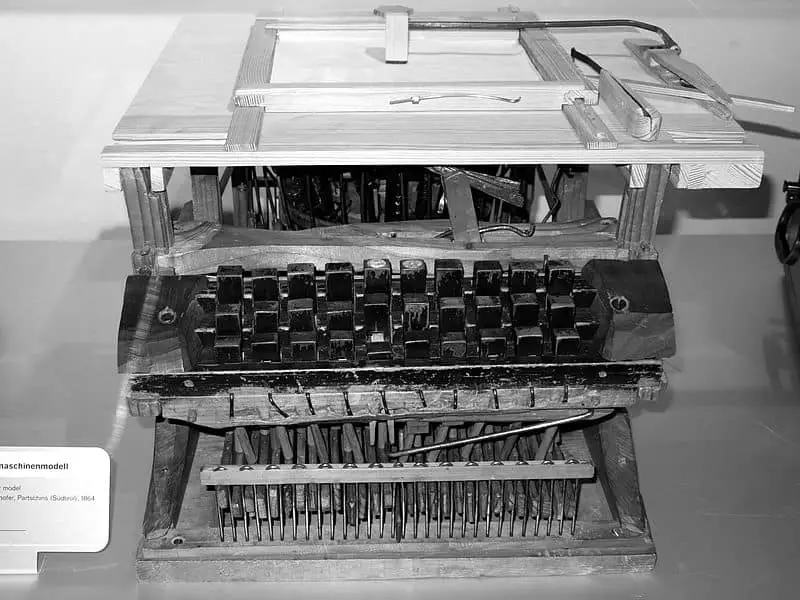
How it Revolutionized
One of the biggest turning points in history was the typewriter. It made reading considerably simpler for a previously painful process.
Compared to handwriting, it made a significant difference in, among others, the typewriter’s compensation for any paper produced by his previously presentable.
The typewriters benefited many merchants, scholars, and professionals all of whom are obliged to “undergo pen drudgery.”
It was intended, in fact, for every finished product, no matter what type of text it was written document, report or message, to be more simple and organized on the paper, and readable by the reader in a coherent fashion.
Without it
One of the most innovative inventions during industrial revolution is the typewriter.
It brought authors speed, productivity to workplaces and employee comfort.
The process of writing was so arduous that the scribes whose lives were dedicated to writing and copying were passed through.
9. Electromagnet
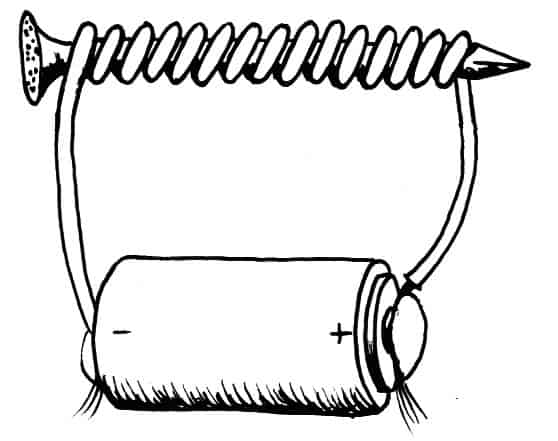
How it Revolutionized
The electromagnet was invented in 1824 by the British physicist William Sturgeon.
His first electromagnet was a horseshoe-shaped iron piece, covered in 18 rounds of exposed copper wire (there were no insulated wires yet).
Iron was painted on it to separate it from the coils.
An electromagnet is a type of magnet where an electrical current produces the magnet field.
Typically, the electromagnets become wire wound to a spiral.
A current through the wire generates a magnetic field centered in the hole which represents the center of the chain.
Without it
Electromagnet is most important part of any power-generation plant without it electricity would have been made by chemical process (like galvanization) & would be limited only to scientific use.
8. Portland Cement
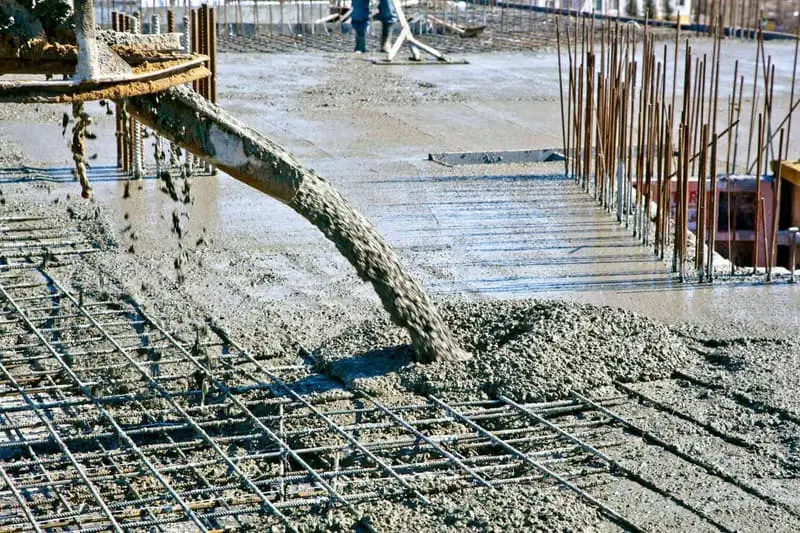
How it Revolutionized
A substance that was a precursor to modern cement had ancient Greeks origins.
Joseph Aspdin discovered and patented Portland cement from Leeds in 1824, probably one of the most popular manufactured products of mankind.
Aspdin produced cement in a furnace by heating powdered limestone mixed with clay and grinding to powder the resulting clinker.
He created the first true artificial cement by a process that changed the chemical properties of the materials, creating stronger cement than that would produce strength than plain crushed limestone.
Without it
Many (individual and commercial) buildings use concrete as it is a strong element of any structure.
Upon mixing with water and application, concrete solidifies and hardens due to a chemical process known as hydration.
The water reacts with the concrete, which ties together the other elements, forming a stone-like substance, eventually.
If today we didn’t have concrete buildings, most constructions would be similar (and limited) to old monuments made of costly carved large rocks joined by the natural limestone cement.
7. Powerloom
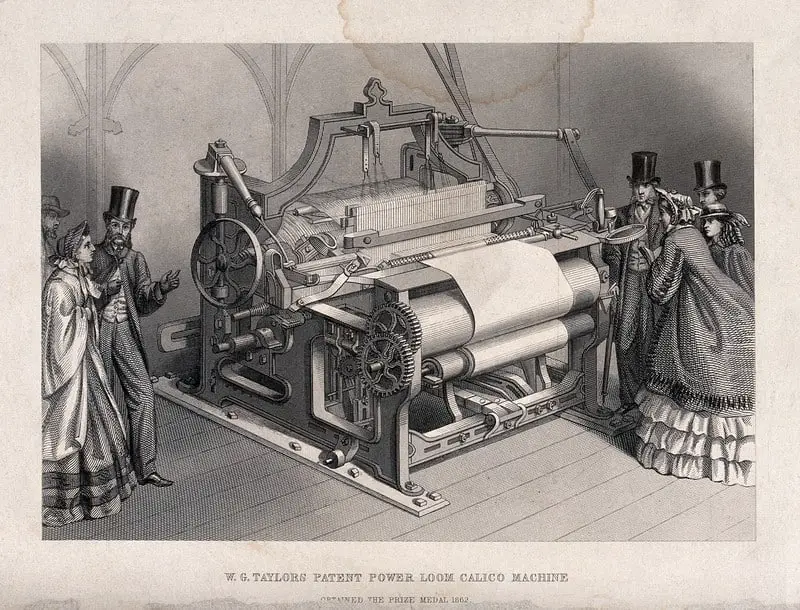
How it Revolutionized
A power loom is a mechanized loom and during the early Industrial Revolution.
It was one of the main innovations in the industrialization of weaving.
Edmund Cartwright constructed the first power loom in 1784 and built-in for the first time in 1785.
Power looms worked like the original handlooms very much.
Foot pedals raised and lowered the warp (tight strung threads) with handlooms, while the weft (weaker threads) was drawn between the warp threads, making fabric.
Power looms kept this basic process but substituted the power source needed to draw the warp threads with steam power, reducing the labor skill required to weave the fabric.
Without it
Before the Industrial Revolution, weaving cloth for clothing was done by hand, typically by a group of craftsmen on a part-time basis.
Not all weavers are necessarily good at this, and even for master weavers, the method was also tedious and slow.
This made for cloth that was slow to produce, and often not even of decent quality.
6. The Bessemer process
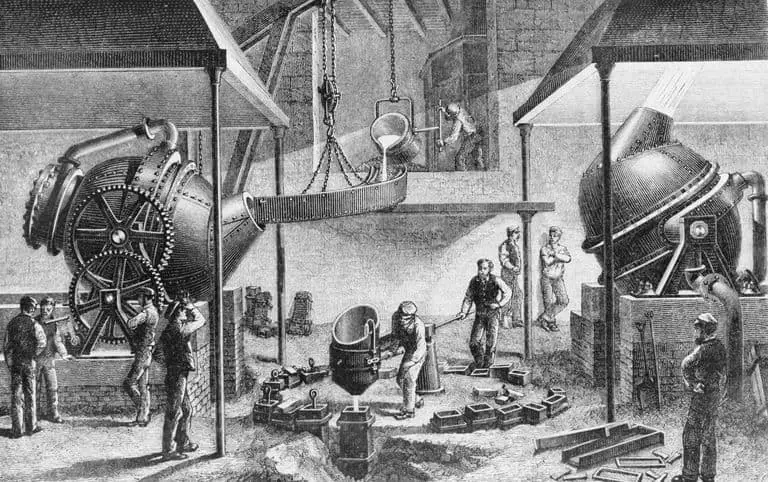
How it Revolutionized
Before introducing the open-hearth furnace, the Bessemer process was the first inexpensive industrial process for mass production of steel from molten pig iron.
The key principle is to remove impurities from the iron by oxidization with air while the iron is in a molten state.
Bessemer Process was a very important discovery as it helped to build stronger rail lines and helped strengthen metal machines and innovative architectural structures such as skyscrapers.
The Industrial Revolution of the United States progressed from the Iron age to the Steel age.
Without it
Steel has only been manufactured in small quantities for much of human history.
Since the invention of the 19th century Bessemer process and subsequent technological developments in injection engineering and process control, mass steel production has become an integral part of the global economy and a key indicator of modern technological growth.
5. Locomotive
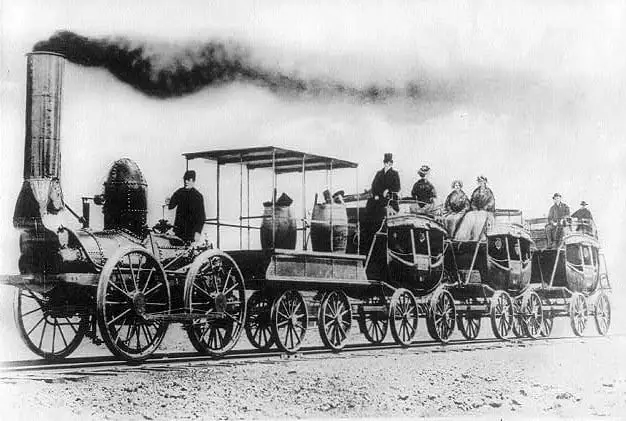
How it Revolutionized
Steamships and steam locomotives made it possible for the transportation of manufactured raw materials to finished goods or sellable goods faster.
The steam locomotive allowed goods to be transported at a much faster rate than by horse.
The railroad makes it possible for people to know exactly where and when supplies will arrive.
Without it
The steam locomotive allowed goods to be transported much faster than by the horse.
Railway made it possible for people to know exactly where and when goods would arrive.
The trains also gave a smoother trip to the freight as it was much harder to rob a train than horse-drawn transport.
With the development of more railroads, goods could reach faster than ever before on time.
This reduced freight transport costs, thereby increasing profits for many businesses.
The ability to quickly deliver goods to remote areas helps people to settle in more remote areas.
Locals were no longer a victim of hunger—-if crops died, they could bring in more food (import) via the train.
Manufactured goods had a greater reach so that people did not have to make long trips back and forth to metropolitan areas to buy essential goods.
Trains could pull massive quantities of merchandise and only people had to go to the train depot to pick up goods or buy things from the local merchant supplied from a train.
4. Telegraph
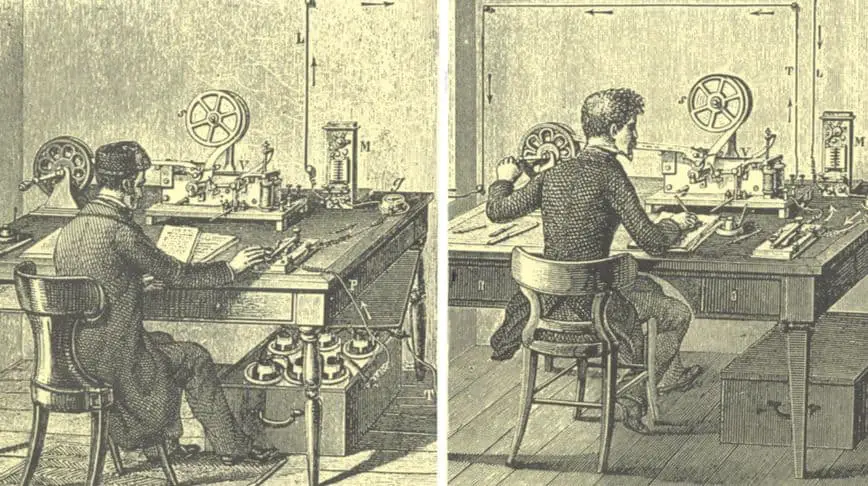
How it Revolutionized
The telegraph could relay messages over long distances from one location to another via an electrical network system.
A telegraph message’s receiver would interpret the machine-produced markings that were encrypted in Morse code.
The first message sent by Samuel Morse, inventor of the telegraph in 1844, reveals his excitement In his new system, he transmitted “What hath God wrought?” communicating that he had discovered something significant.
That he has done! Morse’s telegraph allowed people to communicate without being in the same place almost instantly.
Data sent through the telegraph also made it possible for news media and the government to share information quicker.
The telegraph’s invention also gave rise to the Associated Press, the first wire news service.
Finally, the invention of Morse also connected America to Europe — at the time a revolutionary and international feat.
Without it
Before the electric telegraph, people used Heliograph, Drums, Hydraulic telegraph, post messages or traveling messengers. Sometimes trained pigeon posts for private messages.
3. Watt Steam Engine
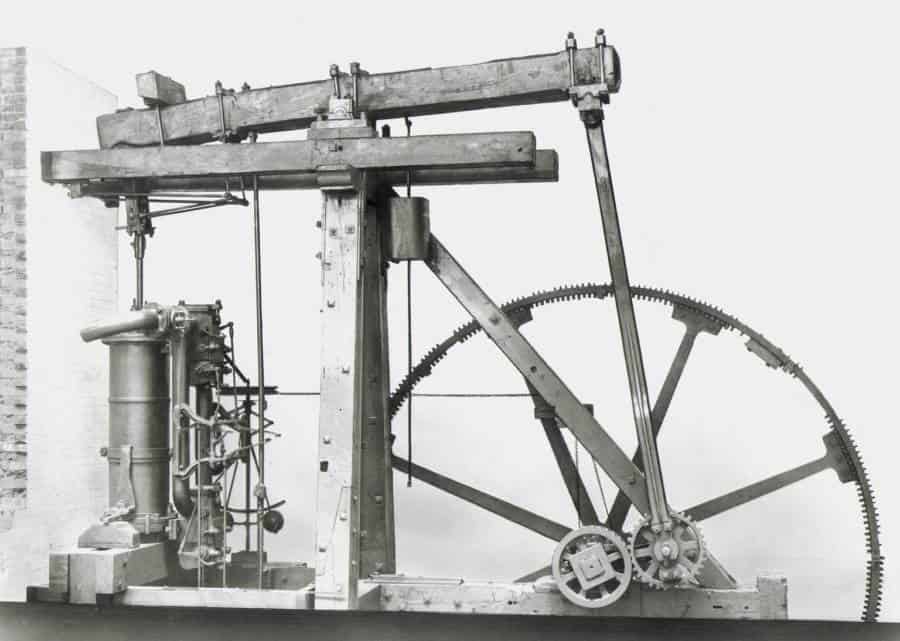
How it Revolutionized
Like the revved-upV-8 engines and high-speed jet planes that fascinate us now, once steam-powered technology was cutting-edge that fascinated our great-great-grandfathers.
It was perhaps, most world-changing industrial revolution invention.
James Watt, a Scottish inventor, did not invent the steam engine.
In the 1760s he dreamed of a more efficient version, introducing a separate condenser and changing the mining industry forever.
At first, the steam engine was just used by some inventors to pump and drain water from mining pits, leading to better access to the resources below.
As these engines became famous, engineers were wondering how to develop and improve them.
Without it
Before this era, people used horse-and-buggy carriages to get around, as well as labor-intensive and inefficient mining practices. That were sometimes inhuman.
2. Flying Shuttle
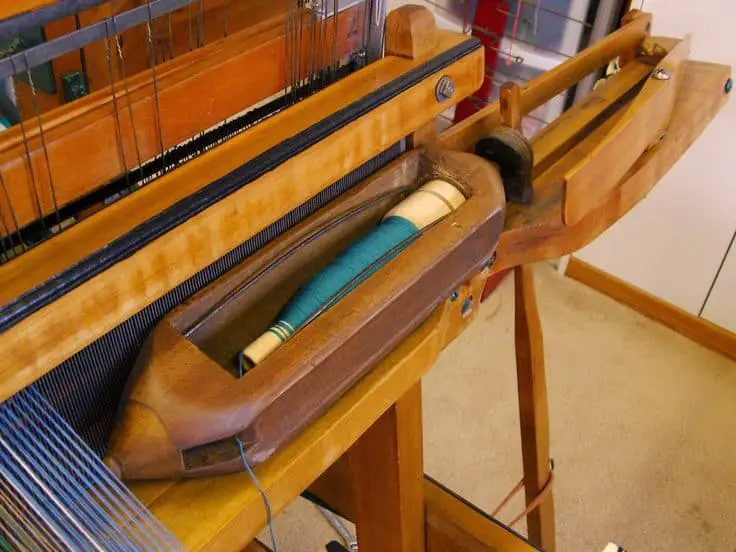
How it Revolutionized
Flying shuttle, a mechanism that was an important first step towards weaving automatically. It was invented in 1733 by John Kay.
The shuttle was thrown or moved by hand through the threads in previous looms, and it needed large fabrics, two side-by-side weavers, to pass the shuttle between them.
The flying shuttle was one of the early Industrial Revolution’s most important inventions.
Before its discovery, weaving was mostly made in small home workshops as a cottage industry.
Large factory looms started putting small-scale hand weavers out of business after their invention.
The speed of the flying shuttle factory loom contributed to the invention of spinning machines, which in turn created enormous cotton demand.
Cotton cloth was really the first true industrial product, produced by machines rather than by human craftsmen cheaply in factories.
Without it
A weaver was needed on each side of a wide-cloth loom before this invention, now one weaver alone was able to do the job of two.
Only fabric could be stretched across his arms to the full width of a human body.
This was because, from hand to hand, he had to move the shuttle back and forth.
1. Concept of Factory

How it Revolutionized
A factory, manufacturing plant or manufacturing plant is an industrial site, usually comprising buildings and equipment, or more generally a multi-building complex, where workers produce products or operate machines converting one material into another.
Without it
Before introducing new machinery and techniques in textiles, iron making, and other industries, individual craftsmen or a particular group of families made everything.
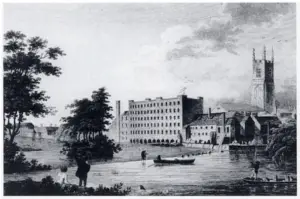
Products that had once been painstakingly crafted by hand started to be manufactured in mass quantities by machines in factories.
Before the concept of a factory, the production rate was extremely low, and the craft was only limited to some people with no variety.
eg: textiles were primarily made of wool.
Many new inventions were introduced by the Industrial Revolution that would change the world forever.
It was a period epitomized in a wide range of areas by the advent of machinery, the creation of cities and significant technological advances.
Many modern mechanisms have their origins from this period.
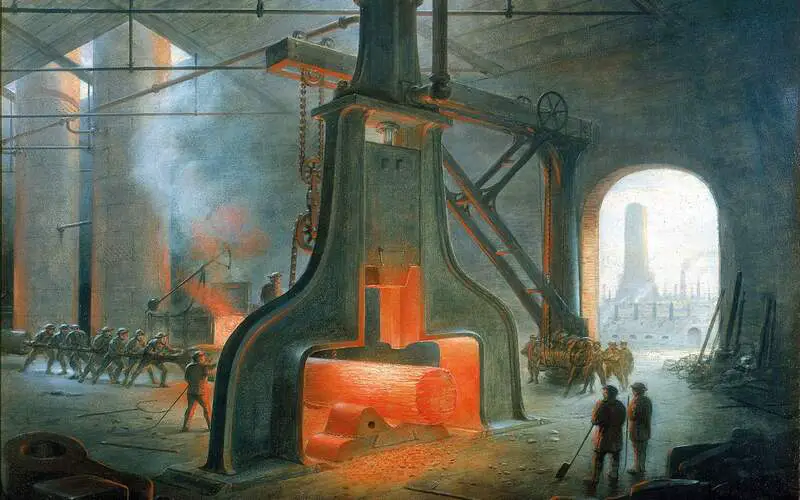
The industrial revolution acted as a catalyst to improve our lifestyle.
But it also introduced child labor, pollution, exploitation of working-class, exploitation of middle class, urbanization of London.
The mining of natural resources like coal for the steam engine proved the destruction of nature.
Britain, at that time, imported cotton from colonies for mass production of textiles using power looms.
Hahaha yeah, it was only after the industrial revolution people used boys for sweeping chimneys. Until economics came along, kids were in education until 18 and never made to work the fields or work as dogsbodies on ships.
It was because industrialization that demanded considerable work and investment from individuals and not necessarily the government, that Capitalism caused the industrial revolution.
There was a mistake. Without the emergence of capitalism, this investment of people whose actions are guided by profit motive would not have been possible.
nooooooooo